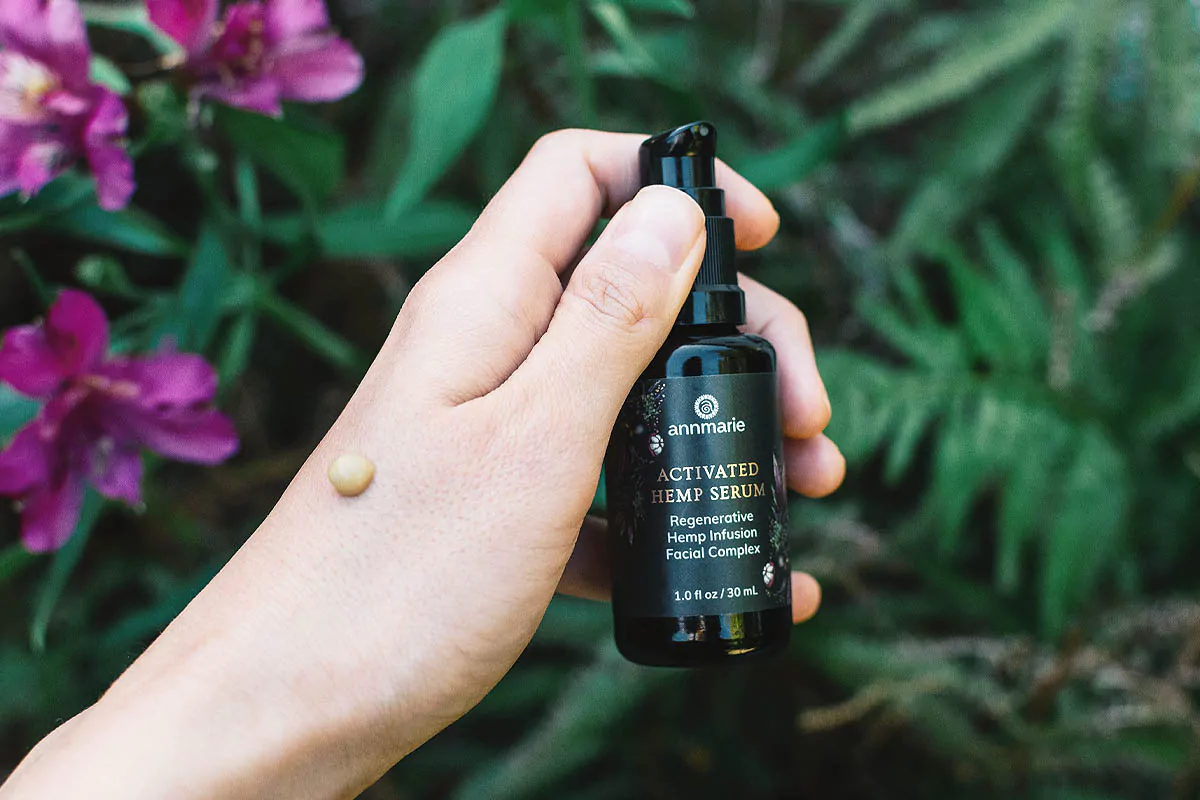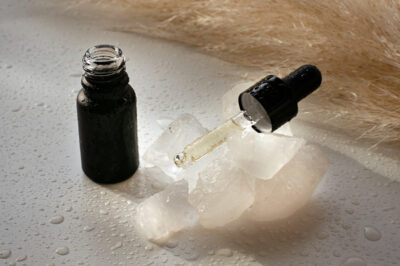Table of Contents[Hide][Show]
In the vibrant, often-crowded world of skin care, you’ve heard the term everywhere: “serum.” You know it’s supposed to be important, a key player in any serious routine. But the specifics can feel hazy. Is it a lightweight moisturizer? A type of facial oil? And is it really the secret to that coveted, dewy “glass skin” look we all admire?
It’s a valid confusion. So, what exactly is a facial serum, and what is its unique and powerful role that sets it apart from every other product on your shelf?
This guide is here to demystify serums for good. We’ll break down the simple science of what they are, explore their most beautiful benefits, and show you exactly where they fit in your ritual to unlock your most radiant-looking skin yet.
The Core Definition: What is a Facial Serum?

Let’s start with a clear, definitive answer, because understanding a serum’s fundamental nature is the key to using it effectively and unlocking its full potential.
The Simple Answer: A facial serum is a lightweight, fast-absorbing liquid formula made with a high concentration of carefully selected, concentrated ingredients. Think of it not as a generalist, like a moisturizer, but as a specialist. Its purpose is to layer potent botanicals and nutrients—like antioxidants, hydrators, or skin-soothers—onto the skin to help refine its appearance and support a healthy-looking glow.
The Science of Small Molecules
What truly sets a serum apart from other products is its molecular structure. Serums are typically water-based or aloe-based and are crafted with smaller molecules that give them a lightweight, fluid texture. This allows them to layer beautifully beneath moisturizers and oils without feeling heavy or greasy. Serums can reach areas of the skin’s surface that heavier creams can’t, allowing their concentrated ingredients to work where they’re needed most.
Serum vs. Oil vs. Moisturizer: Understanding the Roles
A common point of confusion is how serums differ from the other products in your routine. The simplest way to understand it is to assign each one a clear purpose, remembering the distinction between hydrating (adding water or aloe-based hydration) and moisturizing (adding oils that help seal that hydration in).
- Serums HYDRATE: Their primary role is to layer water- or aloe-based ingredients and water-soluble nutrients onto the skin, where their lightweight texture allows for optimal absorption and visible hydration.
- Moisturizers HYDRATE & MOISTURIZE: Creams are typically emulsions—a blend of water and oil. They provide hydration and add comforting moisture, creating a conditioning layer that helps keep the skin feeling soft and balanced. Our moisturizers, like the Restorative Facial Cream, use aloe and botanical hydrosols in place of plain water for added benefit..You can learn more in our complete guide to the differences between a serum and a moisturizer.
- Oils MOISTURIZE & NOURISH: Oils are composed of larger, oil-soluble molecules (lipids). They work primarily on the skin’s surface to create a nourishing layer that helps lock in hydration and keeps the skin feeling soft and supple. Understanding the key differences between facial oils and serums is crucial for proper layering and getting the most out of your routine.
The Key Benefits: What Do Serums Actually Do?

Because serums are such concentrated specialists, each one is formulated to achieve a specific goal for your skin. Think of them as your targeted treatments. Here are some of the most common and beautiful benefits you can expect from a high-quality, well-formulated serum.
They Deliver Potent Hydration
Many serums are formulated with powerful hydrators called humectants. These ingredients, like hyaluronic acid and Tremella mushroom, act like magnets for hydration—helping the skin feel replenished and appear soft, smooth, and supple. Our Probiotic Serum with Tremella is a beautiful example of a serum designed to provide this kind of fresh, dewy look and long-lasting hydration.
They Brighten and Even the Look of Skin Tone
Serums that are rich in antioxidants from natural sources like vitamin C can help improve the appearance of dullness and promote a more even-looking complexion. They work by supporting the skin’s natural resilience against daily environmental stressors that can contribute to a tired or lackluster look. For this purpose, our Wild Fruit Serum is a potent, fruit-based complex designed to enhance the look of your skin’s natural radiance and luminosity.
They Provide Age-Supportive Benefits
Certain serums are formulated with high-performance botanicals that support the skin’s natural renewal process, helping to soften the look of fine lines and promote a smoother, more youthful-looking complexion.A beautiful example of this is the rise of gentle yet effective plant-based retinol alternatives, which offer visible results without the common irritation. Our Activated Night Serum is crafted with this exact philosophy in mind.
They Soothe and Calm the Skin
For skin that feels stressed, reactive, or appears temporarily red, a calming serum can offer instant comfort. Ingredients like hemp seed oil are known for their soothing properties and can help reduce the look of temporary redness, promoting a calm, balanced-looking complexion. Our Activated Hemp Serum is specifically formulated to provide this comforting reset for skin that needs extra care.
They Refine the Look of Pores
While you can’t change the genetic size of your pores, the right serum can help visibly improve their appearance. By delivering lightweight hydration and supporting balanced oil production, serums can help minimize the look of congestion and keep pores appearing smooth and clear. Because of their thin, fast-absorbing texture, serums hydrate the skin beautifully without feeling heavy or clogging pores.
How to Use a Facial Serum in Your Routine

Proper application and layering are key to ensuring you get the maximum benefit from your chosen serum. Thankfully, the rules are simple, intuitive, and designed to enhance the performance of your entire routine.
When to Apply a Serum
The golden rule of skin care layering is to apply your products in order of texture, from the thinnest to the thickest. Because serums are so lightweight and designed for optimal absorption, they should always be applied after cleansing and toning, but before your moisturizer or facial oil. This allows their concentrated ingredients to be effectively received by the skin. Applying a cream or oil first can create a barrier that may reduce how well your serum layers and absorbs.
How to Apply a Serum for Maximum Efficacy
With a concentrated product like a serum, a little goes a long way. You only need a few drops—about a pea-sized amount—for your entire face and neck.
Here’s an esthetician-approved tip: apply your serum to slightly damp skin. The easiest way to achieve this is by misting your face with a toning mist right before application. Damp skin helps serums spread more evenly and enhances how comfortably they absorb. For hydrating serums in particular, this step helps lock in a layer of moisture that the serum’s humectants can bind to.
To apply, dispense a few drops onto your fingertips and gently press or pat the serum into your face and neck. Avoid rubbing—this gentle pressing motion supports even distribution and feels soothing on the skin. Allow it to absorb for about a minute before following with your moisturizer or facial oil.
Your Routine’s Most Powerful Specialist
A face serum is not just another step; it’s your most powerful tool for supporting your unique skin goals. While your cleanser prepares the canvas and your moisturizer protects it, your serum acts as the specialist in your routine—providing a concentrated blend of botanicals that address your skin’s visible needs with precision and care.
We encourage you to see serums as an empowering way to customize your ritual. They’re an invitation to listen to your skin and offer it the focused care it’s asking for—whether that’s a surge of hydration, a boost of radiance, or a sense of calm and balance.
Ready to find the perfect specialist for your skin? From brightening to hydrating to age-supportive, our formulas are designed to deliver potent, plant-based results. We invite you to explore our full Serums & Elixirs collection to discover your skin’s new best friend.
Frequently Asked Questions
Do I still need a moisturizer if I use a hydrating serum?
Yes, absolutely. Think of it this way: a serum delivers a deep “drink of water” to your skin, while a moisturizer or facial oil acts as the “lid” to lock that hydration in and support your skin’s protective barrier. They perform two different, but equally important, jobs.
Should I patch test a new serum?
Yes, it is always a wise practice, especially if you have sensitive skin. Apply a small amount of the new serum to a discreet area (like behind your ear or on your inner arm) and wait 24 hours to ensure your skin is happy with the formula before applying it to your full face.
How do I know which serum is right for my skin?
Choosing the right serum is a beautiful journey of listening to your skin’s unique needs and goals. To help you navigate the options and understand which ingredients will serve you best, we’ve created a complete guide on how to choose your face serum.







Leave a Reply